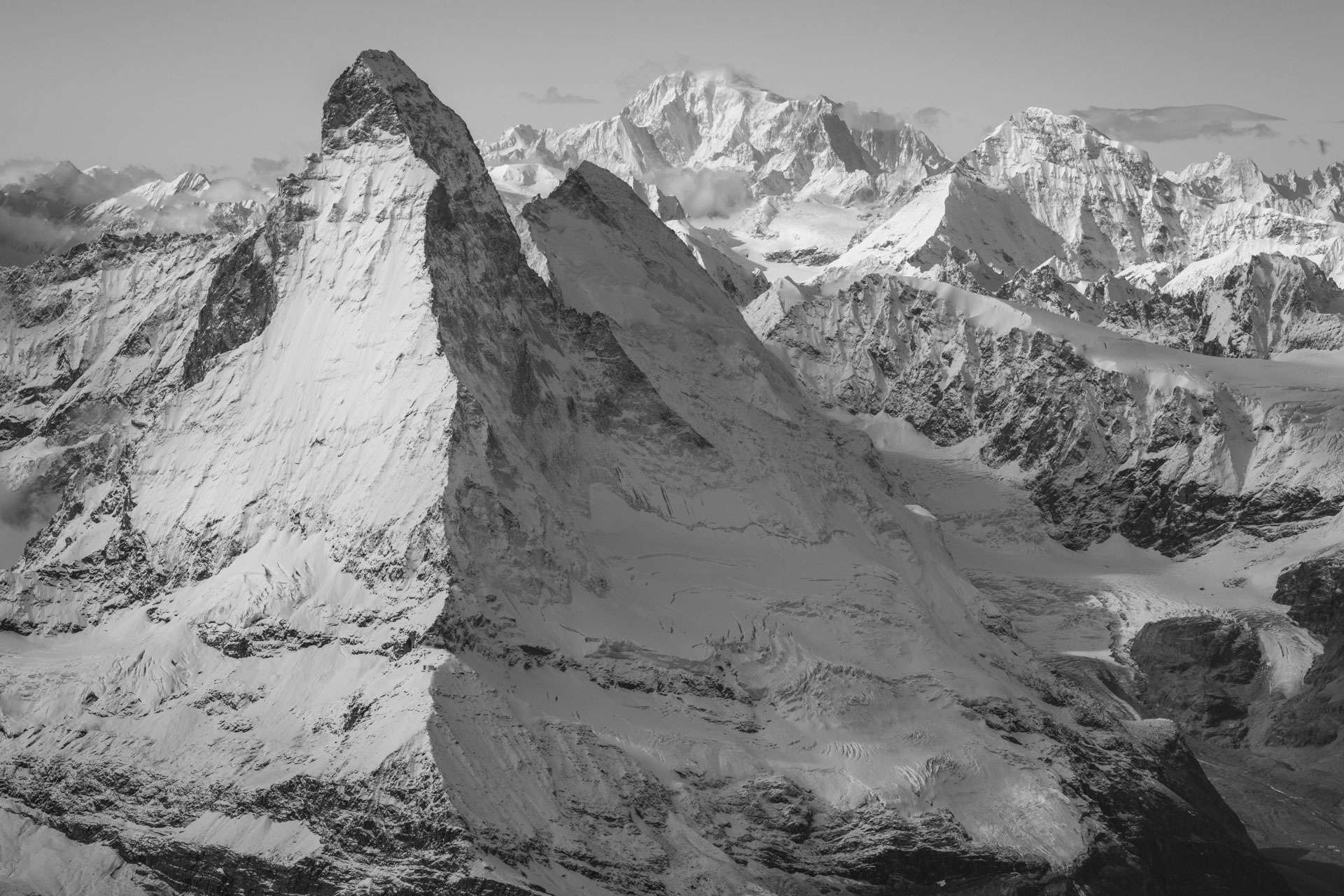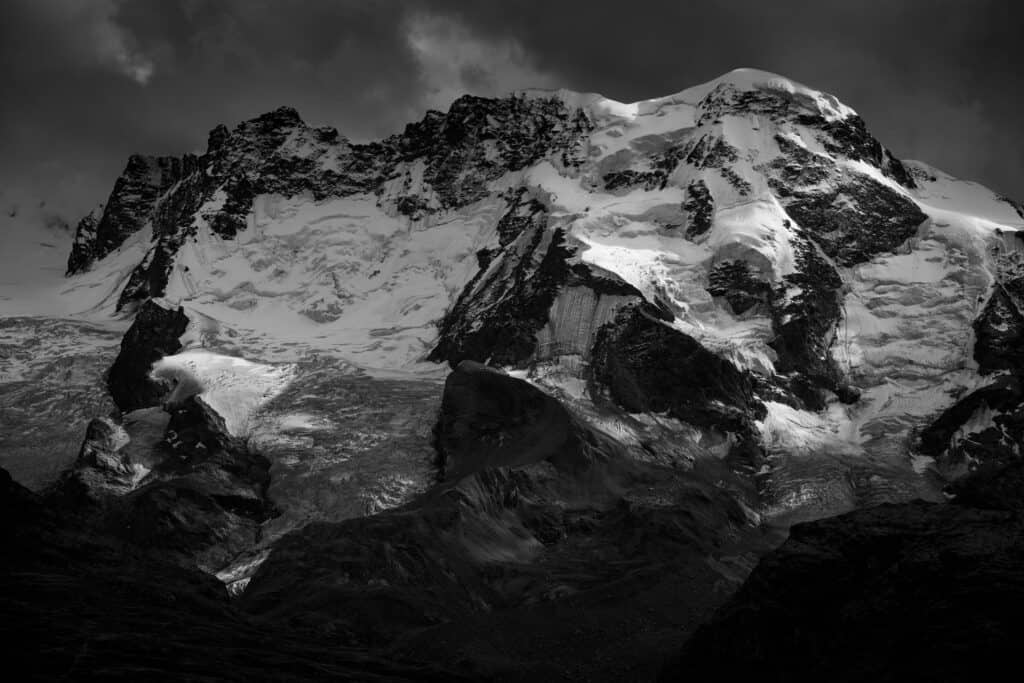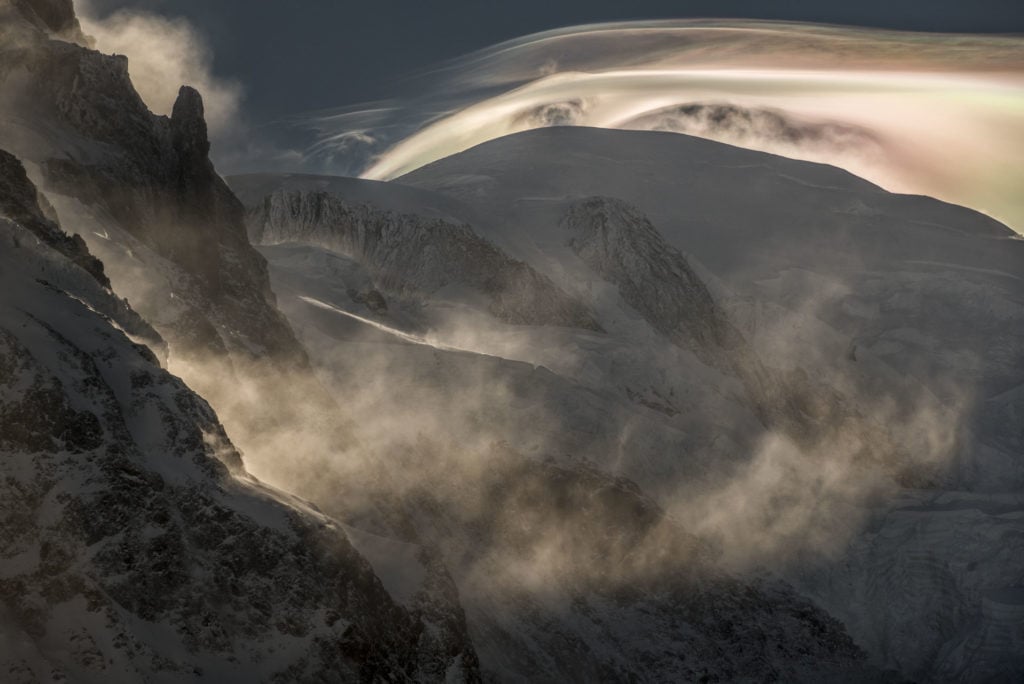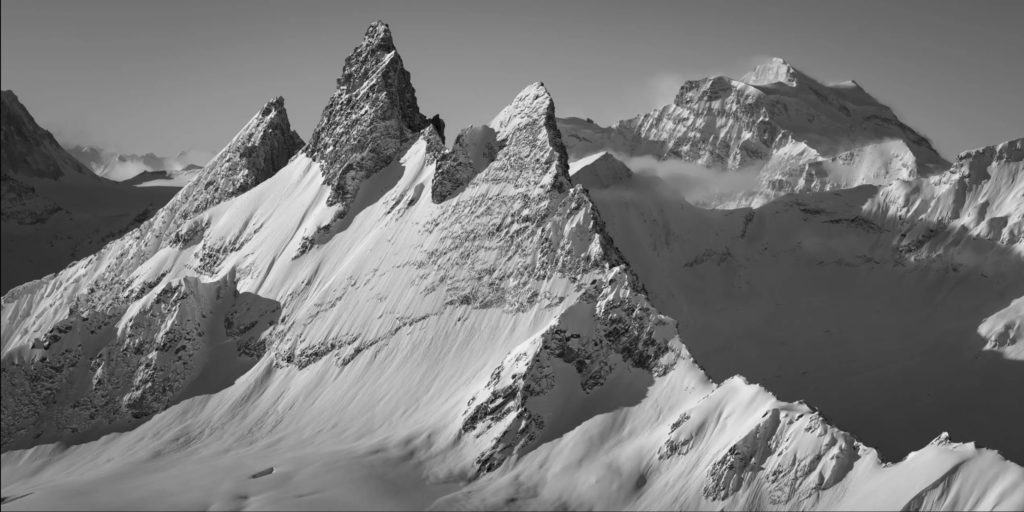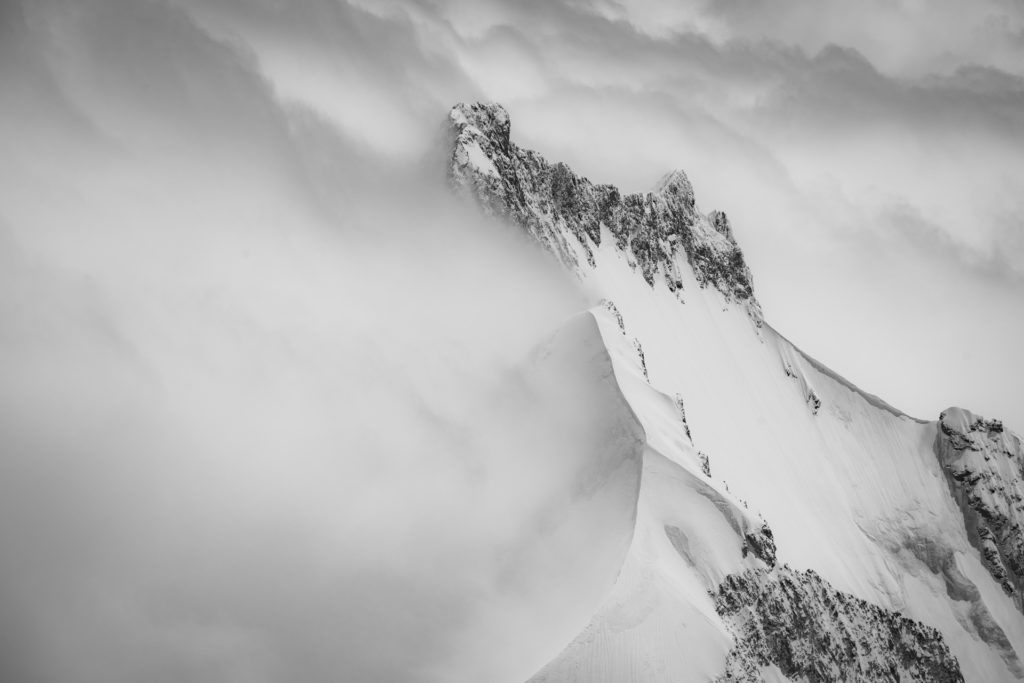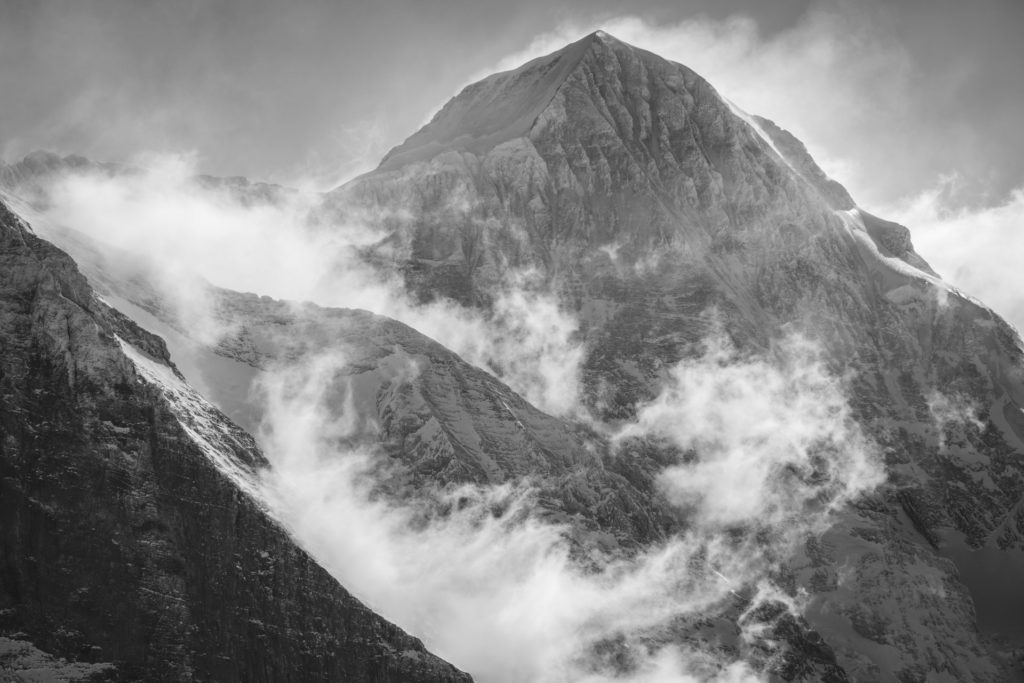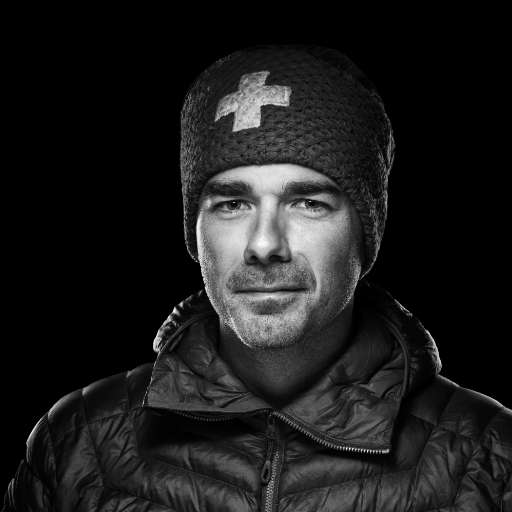The Matterhorn fascinates as much as it impresses. A giant of rock and ice dominating the valley of Zermatt, it rises to the sky like the emblem of the heights. The embodiment of all possibilities. A gigantic, inaccessible masterpiece of nature, it seems to urge us to overcome our fears and make our dreams come true. But where does its exceptional strength and grandeur come from? Portrait of a mountain without equal, the Matterhorn, the all-Powerful king of the Swiss Alps.
The Matterhorn | Birth of a king in the heart of the Swiss Alps
Our story begins over 100 million years ago, when the African and European plates were still separated by the turbulent waves of ancient Thetys. In the depths of this ocean, furious volcanoes gradually covered the marine sediments with magmatic rock. Slowly pushed along by the African plate, these seabeds advance northwards. Until, several million years later, the plates collided. The continents clash in a titanic struggle. The earth's crust wrinkles, the earth shakes. The Alps were born, changing the world's geography forever. At the heart of this upheaval, the African plate climbed relentlessly over the European plate, draining the submarine rocks with it. The Matterhorn springs to life, revealing all the richness of its history from the height of its walls. Alternating schist and gneiss, but also ophiolite and gabbro, the rocks of the oceanic crust that sometimes make the Matterhorn say it's African.

But the mountain is rooted in the heart of the Alps. Over the centuries, glaciers have shaped its faces and winds have sculpted its ridges. The undisputed emblem of the Swiss Valais, it rises to 4478 metres above sea level between Switzerland and Italy, towering over the valleys of Zermatt and Aoste. At the crossroads of cultures, The Matterhorn is called Matterhorn in German, Cervino in Italian, Grand Bèca in Arpitan or Horu in High Valais. But whatever its name, its pyramidal silhouette, shaped by the ridges of the Hörnli, Zmutt, Lion and Furggen, makes it unique. The ultimate symbol of the high summits, the queen mountain. Its north face, first climbed by the Schmid brothers in 1931, is one of the three most formidable faces in the Alps, along with Grandes Jorasses and the Eiger. Carried along by the power of its legendary ridges, the Matterhorn becomes in turn a grandiose pyramid or a majestic sphinx. Exposing the grandeur of the Alps and their infinite beauty to the world. As the jewel in the imperial crown of Zinal, it brandishes a cross, fixed to its summit since 1901, as if daring heaven to measure itself against it. For the Matterhorn stands alone against the elements. And when winds batter its rocks, when air masses clash around it, nature often adorns it with fascinating clouds. Lenticular or banner-shaped, they too seem to pay homage to the Matterhorn, king of the Alps and treasure of the Valais.
The first ascent of the Matterhorn | When man triumphs over the mountain
How can man conquer this gigantic mountain? Reach the summit of this impregnable pyramid, climb its vertiginous ridges? Mountaineers dream of confronting it, try their luck before giving up. The ordeal is too tough and the mountain resists. Until that day in July 1865, when British mountaineer Edward Whymper set out on his adventure. Determined to climb the Matterhorn via the Hörnli ridge, he joined Francis Douglas, who was financing the expedition, and the Taugwalder guides, father and son, at Zermatt . At the Hotel Monte Rosa, he met the Reverend Charles Hudson, who was also planning to conquer the Matterhorn, alongside Douglas Hadow and their guide Michel Croz. The two teams decide to join forces for this incredible challenge.
The team left Zermatt at dawn on July 13 for the Lac Noir chapel, where the men retrieved the equipment they had stored there. Shortly before noon, they set up camp at an altitude of 3,380 metres. Michel Croz and Peter Taugwalder set off to scout the route and, on their return, reassure their team that the ridge does not appear to present any real difficulty. The men fall asleep on the flanks of the colossus with dreamy souls and hearts full of hope, ready to achieve the feat of a lifetime the next day.
July 14th. Daylight. The team resumes its ascent in the late hours of the night. Overcoming obstacles one by one, they surmount the Épaule before coming up against an impassable wall. But far from being discouraged, they managed to bypass the Hörnli ridge, which was too steep at this point, to continue their ascent along the mountain's north face. The closer they get to summit , the faster their hearts beat. The tension is at its height and their concentration is at its peak. There's no room for error, and time is running out. On the other side of the Matterhorn, on its southern slope, an Italian team led by guide Jean-Antoine Carrel is also attempting to make history.
Hand-to-hand with the rock, giving nothing away to the mountain, the English team progresses. Suddenly, the last rock, the last obstacle. Only a few meters of snowy route now separate them from summit. Sensing that victory was close at hand, Michel Croz and Edward Whymper broke away from the team and raced together to the summit of the Matterhorn. Out of breath but happier than ever, they had made it! "At 1:40 p.m., the world was at our feet and the Matterhorn was conquered!" declares Edward Whymper. The English rope party entered into legend, and the last bastion of the Alps had just been conquered. Exultant with joy, the men savor their triumph, gazing in wonder at the panorama before them. Then they signal their presence to the Italian expedition, which is busy two hundred meters below.
Then it's time for the descent. This is always a delicate stage, and the climbers are vigilant. Suddenly, Douglas Hadow slips, taking Michel Croz, Charles Hudson and Francis Douglas with him. All roped up, they were unable to resist. Hearing Michel Croz's cries, Edward Whymper and the Taugwalders have the life-saving reflex of clinging to the wall. Their lives now depend solely on their grip. How could their destiny change in the space of a few hours, from a fulfilled quest to a terrifying fall? Could the most dazzling of victories really be transformed into a monstrous drama? The climbers hold on, but the rope breaks. Whymper and the Taugwalders watched in horror as their comrades fell, desperately trying to hold on to the wall before disappearing forever. 1200 meters of inevitable fall. A dream turned into a nightmare. Shocked by the tragedy, the survivors re-secured themselves to continue their descent. After searching in vain for their companions, they stopped for the night on the rock face. On the morning of July 15, 1865, they finally reached Zermatt and their journey came to an end. The conquest of the Matterhorn via the Hörnli ridge, a resounding feat and a terrible tragedy, marked the end of the golden age of mountaineering.
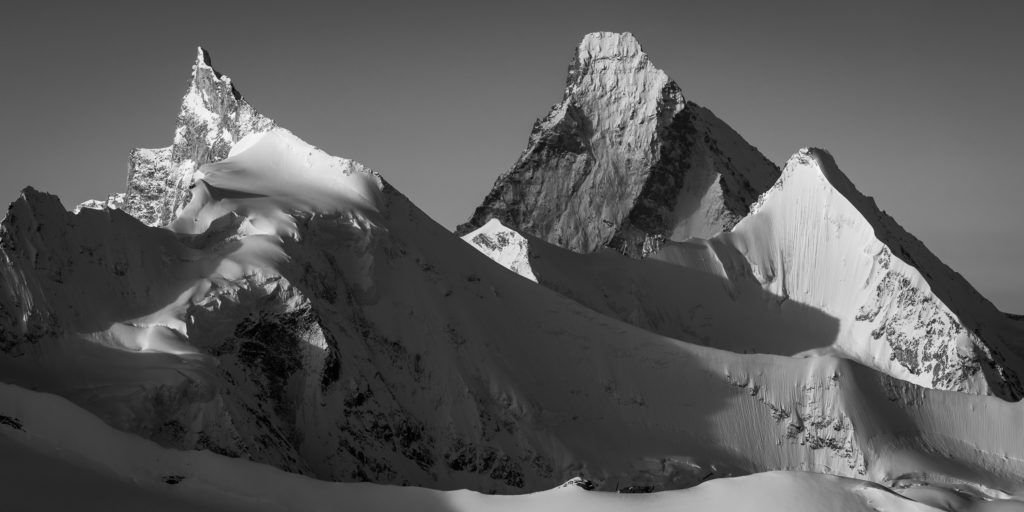
The glory of the Matterhorn | When the mountain wins men's hearts
The Matterhorn, one of the world's most famous mountains, didn't attract attention until the 18th century. Isolated and inaccessible, it was sheltered from man until then. Tourism began to develop in the Zermatt valley in 1854 with the construction of the Hotel Monte Rosa, owned by Alexandre Seiler. The publication of several guidebooks at the same time helped to raise the mountain's profile. But, ironically, it was after the tragedy that claimed the lives of part of the Whymper expedition that the mountain's popularity exploded. The mountaineer had just conquered the Matterhorn, and it was now up to the mountain to conquer the hearts of men. It aroused curiosity, attracting travellers in search of adventure and nature lovers alike. Tourists from all over the world continue to flock to Zermatt to admire this monumental pyramid, or to attempt to reach summit. Climbers flocked to the site, and records were set. Trapped in the valley, visitors can't resist the charisma of this fascinating and magnificent mountain. Enchanted by its exceptional silhouette and the strength it exudes, they remain forever captivated by its beauty. For the Matterhorn leaves no heart unscathed.

In art and popular culture alike, the Matterhorn has become the icon of the Alps. The mountain par excellence. It was depicted by Marc-Théodore Bourrit in 1803, Hans Conrad Escher von der Linth in 1806 and Johann Jakob Meyer in 1820. At the time, he appeared at the heart of pastoral compositions and was not the central subject of the scene. But the more the years passed, the more it inspired artists from all horizons. In the field of photography, the first was certainly John Hobbs, who produced a daguerreotype of the Matterhorn in 1849 for the poet and painter John Ruskin. To this day, summit is one of the most photographed mountains in the world.
The Matterhorn takes part in every art form. A hero of literature and cinema, it has become a key figure in popular culture. Its image plays a leading role in advertising, and its shape is used as a symbol of the very essence of mountains. So why so much fervor for this rocky creature? Because the Matterhorn moves us as much as it soothes us. It moves us as much as it uplifts us. Described by Horace Bénédict de Saussure in 1792 as "a triangular obelisk of vivid rock that seems to have been carved with a chisel", it has all the makings of a modern muse. A timeless ideal contemporary. Its clean lines, regal scale and striking pyramid shape seem to come straight from the creative soul of nature at summit . The quintessence of heights and the wonder of the world. A pure, unchanging masterpiece that seems to reflect all the truth of the heavens.
Théophile Gautier told Victor Hugo about this legendary mountain: "It has the fascination of a woman and the power of a giant. The The Matterhorn, with its rich history and majestic features, awakens in us a supreme will, a thirst for the absolute. King of the Alps, it instills in us a taste for adventure and the fragrance of the most intense truths.

